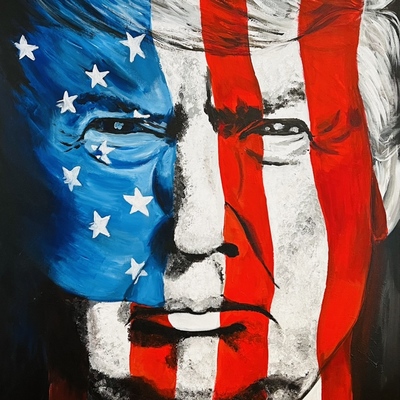Stay informed on the latest Truth Social posts from Donald Trump (@realDonaldTrump) without the doomscrolling. Consider it a public service for your mental health. (Why?)
- An Executive Order was signed on May 12, 2025, to deliver Most-Favored-Nation (MFN) prescription drug pricing to American patients.
- American brand name drug prices are up to three times higher than elsewhere, a result of 'global freeloading'.
- The Administration rejects policy changes that would result in 'billions of dollars in handouts to industry'.
- AbbVie and other drug manufacturers are called to extend MFN pricing to Medicaid for existing drugs.
- Drug manufacturers must guarantee MFN pricing for newly-launched drugs to Medicare, Medicaid, and commercial payers.
- Increased revenues generated abroad must be repatriated to lower drug prices for American patients and taxpayers.
- Drug manufacturers should provide for Direct Purchasing at MFN pricing via Direct-to-Consumer (DTC) and/or Direct-to-Business (DTB) models.
- The Administration will 'deploy every tool in our arsenal' if drug manufacturers do not comply with the demands.
- Binding commitments to meet these goals are expected by September 29, 2025.
The post directly targets the pharmaceutical industry and specific large companies like AbbVie, proposing policies (Most-Favored-Nation pricing, direct purchasing requirements, and revenue repatriation) that could significantly reduce drug prices and impact the revenues and profit margins of major pharmaceutical firms. This presents a high likelihood of significant negative market impact on pharmaceutical stocks, which would broadly affect the S&P 500, particularly the healthcare sector.
The post details domestic drug pricing policy and trade negotiation strategy, not military action or international conflict. It focuses on economic policy within the United States, albeit with implications for international trade practices.
- Commodities: Unlikely to have a direct significant impact on commodity prices. Gold (XAU) might see a minor uptick if broader market uncertainty leads to a flight to safety, but this is a secondary effect. Short-Term Watchlist: XAU/USD price action. Medium-Term Focus: Broader inflation trends if drug price decreases affect CPI.
- Currencies (Forex): Potential for modest US Dollar Index (DXY) volatility. If the policy is perceived as detrimental to a major US industry, it could lead to USD weakness, or inversely, some flight to safety demand for USD if global equities are affected. Watch USD against currencies of countries with large pharmaceutical sectors. Short-Term Watchlist: DXY, EURUSD, USDJPY. Medium-Term Focus: Global growth differentials and central bank policy responses.
- Global Equities: High impact on pharmaceutical and biotechnology sectors globally, as major US pharma companies have international operations and the 'Most-Favored-Nation' policy concept could influence global pricing models. This could lead to a sector-specific sell-off that may spill over to broader indices like S&P 500, Nasdaq, and European indices (STOXX 600) due to significant healthcare sector weight. Short-Term Watchlist: Futures open, VIX spike, performance of healthcare and biotech sectors. Medium-Term Focus: Earnings revisions for pharma, macro data.
- Fixed Income (Bonds): Potential for a flight to safety into US Treasuries, leading to lower US 10Y and 2Y yields, especially if the equity market experiences a significant downturn. Credit spreads for pharmaceutical companies might widen due to increased perceived risk. Short-Term Watchlist: UST 10Y yield levels, credit ETF flows for healthcare. Medium-Term Focus: Fiscal concerns related to government intervention and industry revenue impact.
- Volatility / Derivatives: The VIX is likely to spike in response to increased uncertainty and potential negative impact on a major S&P 500 sector. Options positioning on pharmaceutical stocks will be closely watched for amplified moves. Short-Term Watchlist: VIX levels versus VIX futures term structure, sector-specific implied volatility. Medium-Term Focus: Volatility regime shifts, macro policy uncertainty.
- Crypto / Digital Assets: Indirect impact. If equity markets react negatively and a risk-off sentiment prevails, Bitcoin (BTC) might initially decline alongside tech stocks, given its correlation. However, if the policy is framed as significant government intervention, it could theoretically attract some interest as an alternative asset. Short-Term Watchlist: BTC/USD price action, correlation with major equity indices. Medium-Term Focus: Regulatory news and broader macro liquidity conditions.
- Cross-Asset Correlations and Systemic Risk: Watch for potential breakdowns in normal equity-bond correlations if both sell off due to policy uncertainty, though a widespread systemic crisis from this specific policy is unlikely. Increased stress in healthcare credit markets could be a localized concern. Short-Term Watchlist: MOVE index, junk bond ETFs. Medium-Term Focus: Central bank intervention possibility in case of significant market turmoil.
- Retail Sentiment / Market Psychology: The post could trigger significant retail discussion around drug pricing, healthcare stocks, and 'big pharma' narratives on social media. While unlikely to directly cause 'meme stock' phenomena for pharma giants, it could influence retail investor sentiment and specific stock choices within the healthcare sector. Short-Term Watchlist: Social media trends, Reddit discussions related to pharma companies. Medium-Term Focus: Social media influence on market structure and retail trading behavior.

